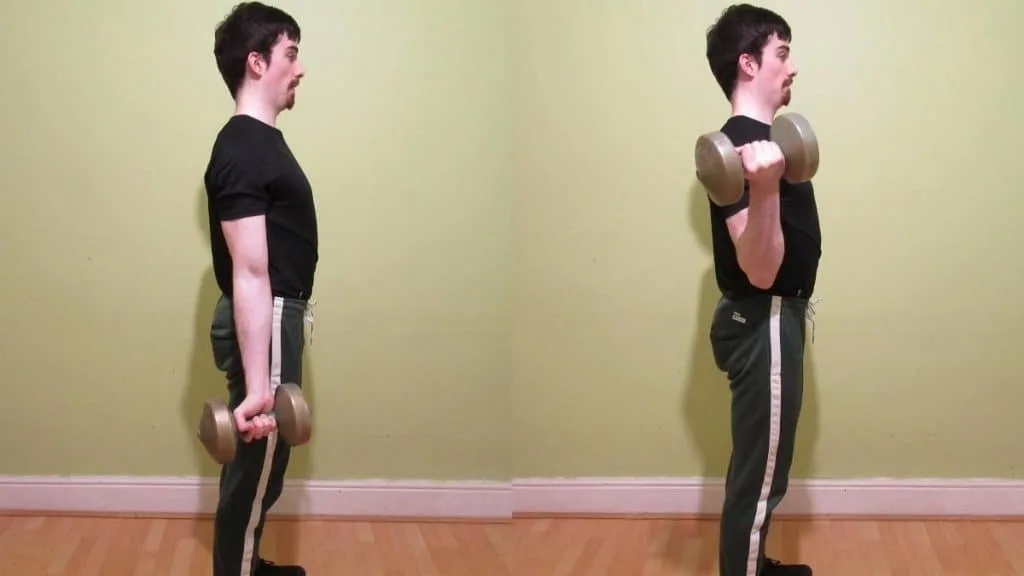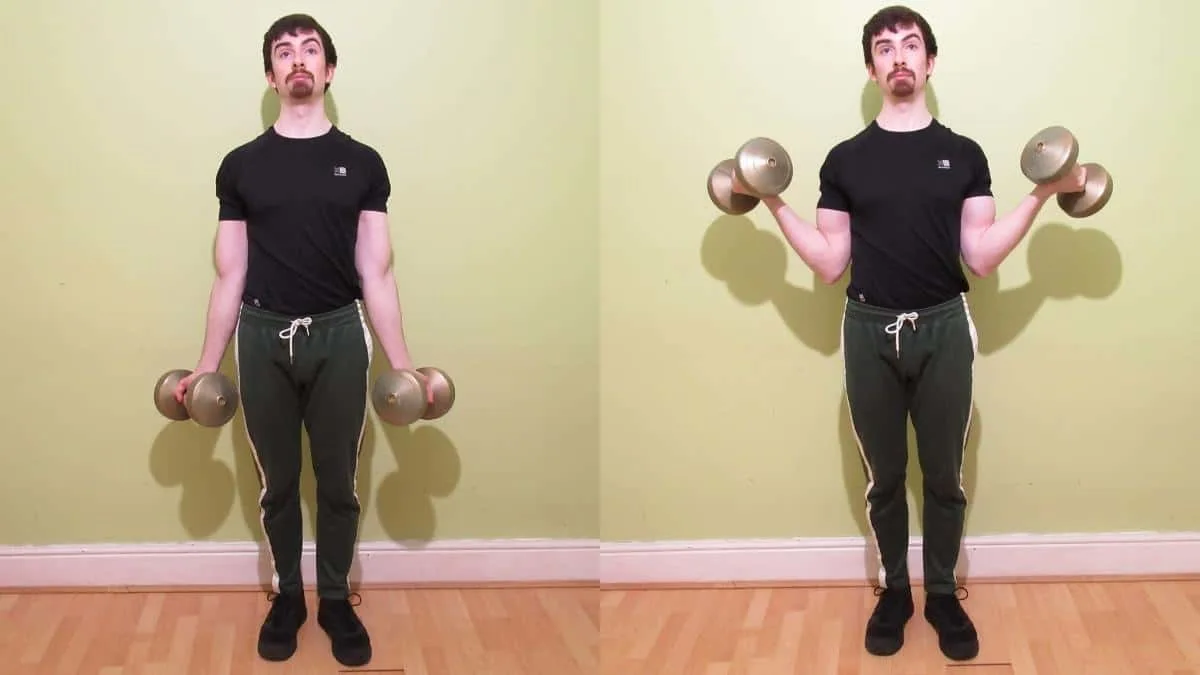Wide dumbbell curls are a spin on regular curls (see our guide to performing a proper dumbbell curl) that shift the emphasis of the exercise onto the short (inner) head of the bicep muscles.
Contrary to some beliefs, this exercise isn’t technically a wide grip dumbbell curl because you’re not changing your grip on the dumbbell. Rather, you’re simply putting your shoulders into a slight external rotation while you curl.
However, if you read until the end, you’ll learn one handy grip tip that you can use to instantly make all of your curls more effective.
Wide dumbbell curl exercise details
- Main Muscles: Biceps brachii
- Secondary Muscles: Forearm flexors, brachialis, brachioradialis
- Exercise Type: Strength
- Exercise Mechanics: Isolation
- Difficulty Level: Beginner
- Equipment Needed: Dumbbells
How to do wide dumbbell curls
- Stand up straight and hold a pair of dumbbells by your sides.
- Externally rotate your shoulders so that your elbows are tucked into your sides.
- Curl the dumbbells toward your shoulders until your forearms and biceps make firm contact.
- Pause at the top of the rep for a second and squeeze your biceps.
- Lower the weight under control until your elbows reach full extension.
- Perform 3-5 sets of 6-12 reps in total.
Are dumbbell wide curls effective?

The dumbbell wide bicep curl is definitely effective, but more or less so depending on your weak points. This is because the exercise shifts the tension onto the inner muscle fibers of your biceps.
As such, if you need more overall bicep mass in general or more short head development in particular, then wide dumbbell curls are a great exercise.
On the other hand, if you already have decent biceps but a lagging long head, then you should focus on exercises that use a close grip and which have you curl with your arms behind your body. This will biomechanically shift the emphasis onto the outer muscle fibers of your biceps, which is to say, onto the long head.
You can see our wide grip vs close grip curls debate to learn more about how the various grip widths work the different regions of the biceps. But if you don’t fancy doing any more reading, then I can tell you that you should probably do both types of exercises if you want to build your biceps optimally.
Variation: Seated dumbbell wide curls

Seated wide dumbbell curls are virtually identical to the standing version in terms of technique. The only difference, of course, is that you’re doing the former exercise while sitting down.
But in terms of muscle activation, there are a few more nuances that we need to consider.
When you’re doing wide grip dumbbell curls sitting down, you can’t really use your back, legs, or hips to cheat the weights up because these body parts are stabilized by the bench. As such, the seated version is better for isolating your biceps and using the proper form.
Similarly, by bracing your torso against the back pad, you can more easily focus on working your biceps because you don’t need to exert as much force to stabilize your core.
You can also give cable wide curls a try if you want to blast your biceps with constant tension while you’re at the gym.
In conclusion

Earlier I promised to show you a special grip tip if you read until the end. Well, here it is:
Hold the dumbbell on the outside of the handle so that one end of it is touching your thumb. This forces your biceps to supinate harder in order to lift the weight. You really want to think about turning your little fingers as far away from the midline of your body as possible so that you can generate an intense bicep contraction.
So give that a go next time you do wide dumbbell curls and see the difference in bicep activation for yourself.

